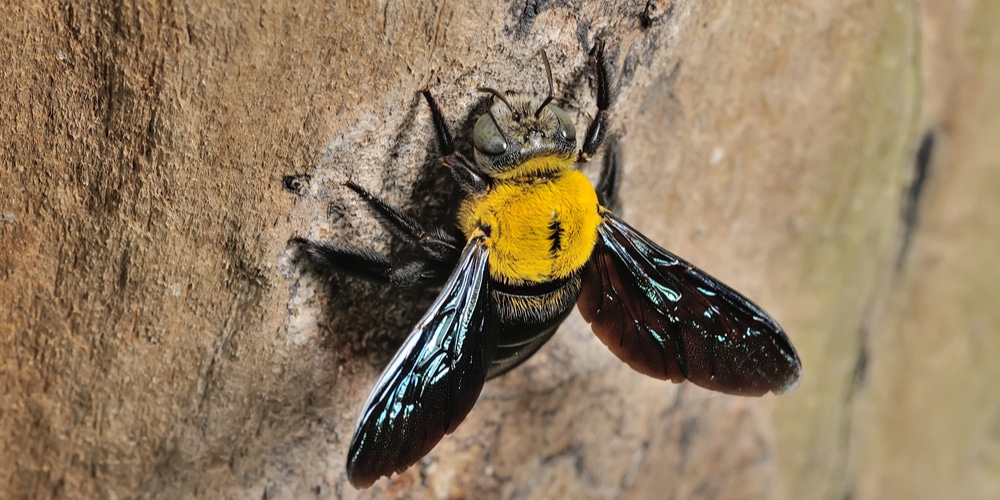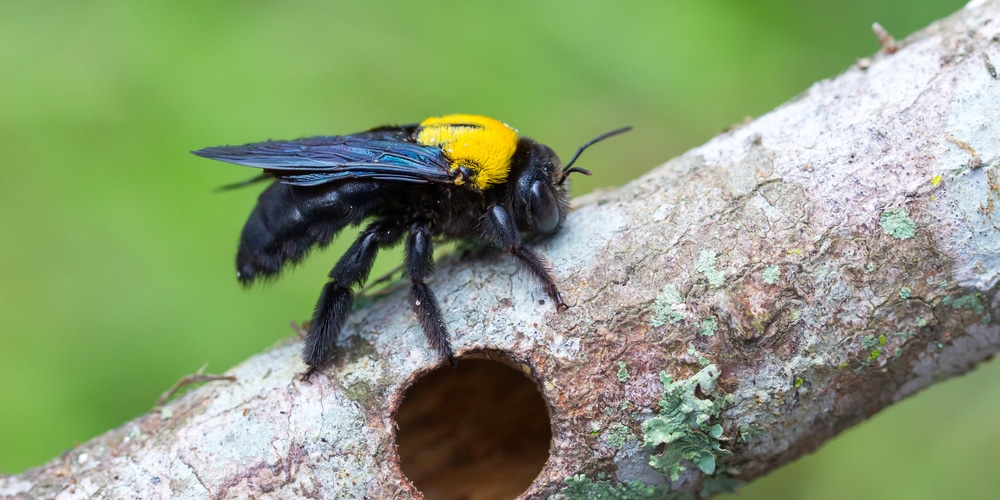Carpenter bees, also called wood bees, are named so because they prefer to nest in soft tissues of several untreated woods like cedar, pine, bamboo, and redwood.
They usually try hard to dig through the sides of these woods and create a home within them. If you have untreated wood or furniture made of untreated wood in your home, seeing carpenter bees around your home might be common.
Knowing how harmful bees can be, it is likely that you panic upon realizing carpenter bees are in your home. Importantly, you will want to know if carpenter bees are aggressive and if they sting so that you improvise ways of safeguarding your kids and pets against the bees.
This article will help you understand if carpenter bees are aggressive and if they sting.
Do carpenter bees sting?
The male and female carpenter bees have distinctive features and duties they perform as they stay in a nest. They may both seem to look alike, but when observed keenly, the male has small white markings while the female has pure blackheads.
The female carpenter bees have unique carpentry skills, which they use to construct nests and make perfect spaces to lay eggs. To protect themselves and their territory, they have a stinger that they can use to attack anyone invading their nest.
The female carpenter bees are usually not aggressive and may not come out to attack you easily unless you spike your finger in their nest. All in all, unlike honey bees which die after stinging once, carpenter bees are not barbed stingers, and they can sting you severally without dying.
The stings are poisonous but may heal after administering painkillers to the patient. However, if the stings result in severe problems like too much swelling or poor breathing, the affected should get emergency medical attention.
On the other hand, the male carpenter bees are very aggressive but do not sting. Their work is to keep the nest safe and free from predators like wood-eating birds and humans.
Whenever they sense a predator coming near the nest, male carpenter bees get out of the nest and buzz at the predator until they get away. Even though they won’t sting you, their aggressiveness and pound buzz will scare you away.
Male carpenter bees protect their mating rights by chasing away other bees that try to mate with their female counterparts.
Generally, female carpenter bees are considered to be more hardworking than males. They go out to seek nectar from flowering plants and keep bringing in the nest to feed on.
At night, they are less active and will most likely be resting or sleeping. If you are planning to destroy their nest or chase them away, it is advisable to put on protective gears and do it at night when the bees are less active.
How to chase away carpenter bees
If you are not comfortable with these tiny pollinating creatures in your home, possibly because they are damaging your wooden furniture or softwood trees, try the methods below and chase them away.
Set a bloom play nearby: carpenters are very sensitive to noise, and the vibrations that a boom play may cause will set them away. Place a boom play machine near their nests as the loud noise will encourage them to escape the nesting.
Stuff the holes with steel wool: steel wool will help prevent the bees from digging deep into your wood. Therefore, they will go away because the steel wool will imply that the habitat is no longer conducive.
Spray on the present barrows and wood: use citrus or almond oil to spray the wood or any existing burrows to scare away the bees. Naturally, carpenter bees and other insects dislike almond and citrus oil.
Do carpenter bees sting?: Conclusion
Carpenter bees are good pollinators and are loved by many flower gardeners as they aid in pollination. However, these pollinators make their nest in woods, and if you tolerate them in your home, they will make a habitat either in your garden softwood trees or in your furniture.
When they barrow your furniture or drop their waste on the furniture, thus interfering with the beauty of the furniture aesthetics. This article is meant to help you understand more about carpenter bees before you allow them to continue burrowing your trees and furniture.
Related Article: Does Weed and Feed Kill Bees?

